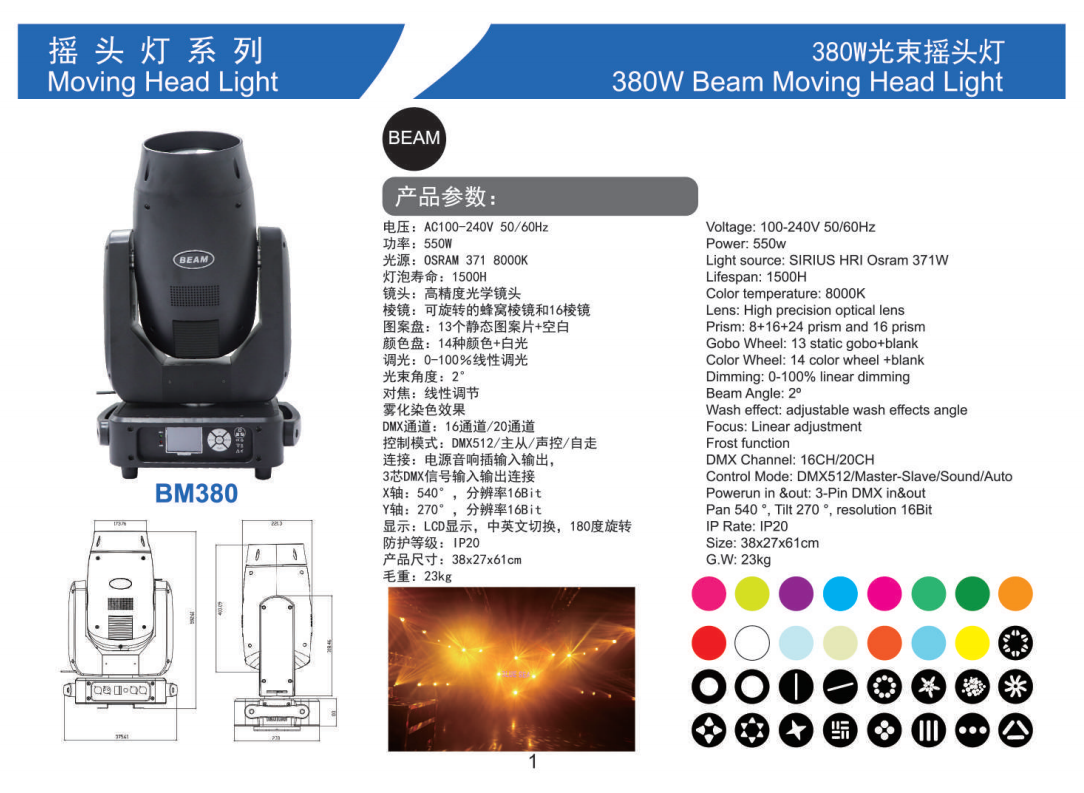In the world of stage and event lighting, a well-organized lighting catalog can be one of the most powerful tools for smart procurement. Whether you're a lighting designer, rental manager, or venue operator, understanding how to read, interpret, and leverage catalogs can streamline your fixture selection, budgeting, and project planning. This article walks through the key strategies and insights needed to turn lighting catalogs from dense pages into dynamic decision-making guides.
1. Understanding the Structure of Lighting Catalogs
Lighting catalogs—whether digital PDFs or online product databases—typically follow a structured format:
Product Categories: Divided into profiles, washes, beams, effects, architectural lights, and accessories.
Specifications Tables: Include power, output, lens type, color mixing, control protocols, and dimensions.
Application Tags: Suggested usage for theater, church, concert, club, broadcast, etc.
Comparison Charts: Some catalogs include side-by-side comparisons for models in the same series.
Understanding this structure helps you quickly locate and compare fixtures relevant to your project needs.

2. Define Your Project Needs Before Browsing
Before diving into a lighting catalog, define your event or installation requirements:
What is the size and type of venue?
Is it indoor or outdoor?
Do you need color-changing, sharp focus, or long-throw beams?
What is the available power infrastructure?
Knowing the answers helps narrow your scope and avoid distractions. It also allows you to focus only on fixtures that meet specific technical thresholds.
3. Use Filtering and Index Tools in Digital Catalogs
Most digital catalogs or brand websites offer built-in filtering tools:
By Fixture Type: Spotlights, wash, hybrid, pixel bar, etc.
By Wattage or Power Source: Helps match to your power budget or mobile setups.
By Control Protocol: If you're DMX-only or Art-Net compatible, this saves hours.
By IP Rating: Critical if you’re sourcing outdoor fixtures.
If the catalog is in PDF format, use bookmarks, table of contents, and keyword search (Ctrl+F) to speed up navigation.
4. Cross-Referencing Specs and Use-Cases
The smartest buyers don’t just compare prices—they compare purpose.
When reviewing fixtures in a catalog:
Match color temperature and CRI to your camera or human eye needs.
Evaluate beam angles or zoom ranges based on throw distance.
Look at cooling methods (fanless vs. active cooling) if you're working in noise-sensitive environments.
Also, consider the physical design: handles, rigging points, and safety cables matter in real-world installs.
5. Interpret Ratings and Symbols Accurately
Many catalogs use standardized lighting terminology and symbols:
IP65 / IP67: Degrees of dust and water resistance.
CRI (Color Rendering Index): Higher CRI means better color accuracy.
CCT (Correlated Color Temperature): Indicates warmth or coolness of light.
Zoom Range (e.g. 8°–60°): Adjustability of beam spread.
Lux at Distance: Often shown in tables—look for footcandles or Lux at 5m, 10m, etc.
Understanding these helps avoid mismatches between spec sheet promises and actual performance.
6. Compare Lifetime Cost, Not Just Price
A common mistake is focusing solely on upfront cost. A smarter approach is assessing total lifetime value:
Wattage efficiency vs. lumen output (lumens/watt)
Lamp or LED module lifespan
Cooling method affecting maintenance cycles
Warranty and service availability
Energy draw vs. venue circuit capacity
Catalogs often include technical sheets or links to photometric data—these are worth reviewing before committing.
7. Check Compatibility and Ecosystem Integration
A fixture is never isolated—it’s part of a control system. Use the catalog to:
Verify DMX channel modes
Look for RDM, Art-Net, or sACN compatibility
Ensure connectors match your existing cabling (e.g. XLR 3-pin vs. 5-pin, PowerCON, etc.)
Assess whether similar fixtures in the same catalog are compatible or modular
Planning integration now prevents operational surprises later.
8. Use Visuals and Case Photos Strategically
Don’t overlook the importance of catalog visuals:
Diagrams showing beam angles or photometric coverage
Real-world photos of the fixture in use
Rear panel layouts for port access
Dimensions with weight and mounting style
If a catalog includes examples from concerts, churches, or fashion shows, match those photos to your intended application. It's a great reality check for imagining your use case.
9. Contact Sales with Specific Questions
Using catalogs smartly means knowing when they’ve told you everything they can—and when to ask a human.
Prepare questions like:
"Can this profile fixture mount vertically in a rig with a 25cm truss opening?"
"Does the zoom lock stay in position in transit?"
"Can this fixture operate on a 230V/50Hz power system?"
Referencing specific catalog page numbers or model names makes communication faster and more accurate.
10. Organize and Archive What You Review
Smarter buyers keep a private log of fixtures they’ve reviewed:
Catalog page snapshots or bookmarks
Excel sheets with spec highlights
Notes on why a fixture was accepted or rejected
Over time, this builds a reference library that reduces time spent re-evaluating catalog content year after year.
READ MORE:





Blue Sea Lighting is an enterprise with rich experience in the integration of industry and trade in stage lighting and stage special effects related equipment. Its products include moving head lights, par lights, wall washer lights, logo gobo projector lights, power distributor, stage effects such as electronic fireworks machines, snow machines, smoke bubble machines, and related accessories such as light clamps.
Quick Links
For more questions subscribe to our email








